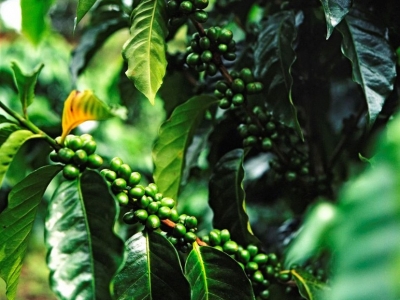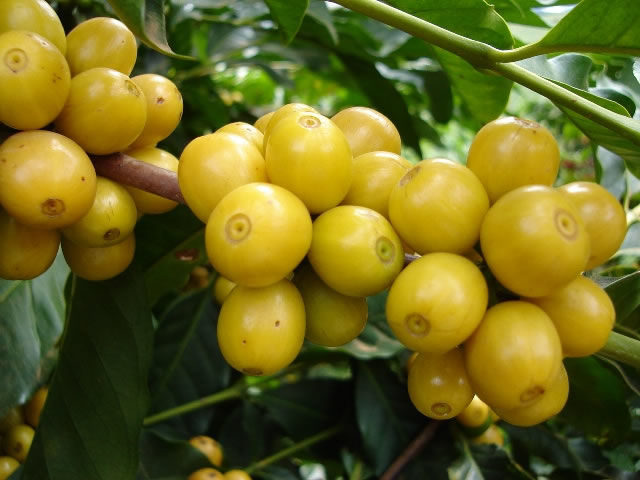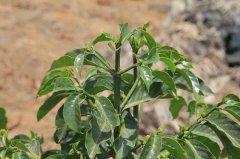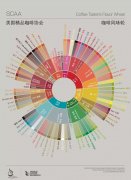Professional terms for coffee farms-the meaning of various words for coffee farms
For professional baristas, please follow the coffee workshop (Wechat official account qianjiecoffee)
Remove: remove foreign bodies in raw beans, broken beans, and defective beans.
Coffee beans: business term used to refer to sun-dried coffee seeds.
Coffee cherry: the fruit on the coffee tree.
Defect: the damaged part of the coffee bean will seriously reduce the quality of the coffee.
Dry fermentation: coffee is fermented in an anhydrous state after peeling.
Drying: a method of treating coffee beans by drying them in the sun or mechanically. After drying, in the immediate shelling step, use a machine to remove the fruit shell. As a result, "natural" or "unwashed" coffee beans are produced.
Exocarp: the outermost skin of a coffee cherry. When the fruit is ripe, it will appear red or yellow.
Fermentation: the use of microorganisms to remove pectin mucus attached to the surface of the inner pericarp.
Rosa Xia: although many people say that Panama is the hometown of Rose Xia, it actually comes from Yiqiao Mountain in Ethiopia. At first, it was introduced to Costa Rica and then to Panama for commercial cultivation. In Panama, Rosa rugosa is planted at high elevations, and the climate and soil are very suitable, which promote its growth. In 2004, after Ruoxia won the best Panama award, it immediately attracted the interest of international judges and connoisseurs. After that, Rosa continued to win prizes in the coffee competition with its rich citrus, honey and jasmine flavors. Coffee fans are amazed by the tail rhyme similar to bergamot and its soft sour taste.
Shelling: use a machine to remove the dry shell of parchment coffee beans to produce raw coffee beans.
Shell: the shell of a dried coffee fruit.
Shelling: use a machine to remove the shell of dried coffee fruit.

Immature: not mature.
Treatment method: the treatment process from coffee fruit to coffee beans. Through the pericarp, pulp, parchment, and silver skin, only coffee beans are left. The treatment methods can be divided into two types: washing and solarization.
Pruning: a way of cultivating. Cut off excess branches in order to bear more fruit or shape.
Pulp: part of a coffee cherry. Its ingredients are peel and part of the mucus, which are removed during pulp removal and fermentation.
Pulp removal: the process of removing pulp and some mucus by a machine. Usually, there is still some mucus attached to the parchment.
Roasting: coffee undergoes high temperature culture and a series of physical and chemical changes that change its structure and composition to dark brown ripe beans with attractive aroma.
Sowing: the planting of seeds.
Screening: the process of selecting coffee cherries according to their size, weight and maturity and removing foreign bodies at the same time.
Picking: also known as "milking". Regardless of the maturity of the coffee cherry, pick all the coffee fruits on the tree at one time.
Dried coffee beans: dry coffee cherries, reduce the water content, to remove the coffee shell, packaging and storage.
Wash beans: use water to remove decomposed pectin mucus from parchment.
Wet-treated coffee: wet-treated coffee is divided into washed coffee and semi-washed coffee. Washed coffee removes all pectin mucus from coffee beans. Semi-washed coffee removes part of the pectin mucus and still some of it is attached to the parchment.

Important Notice :
前街咖啡 FrontStreet Coffee has moved to new addredd:
FrontStreet Coffee Address: 315,Donghua East Road,GuangZhou
Tel:020 38364473
- Prev

The "parents" of Mocha, the most primitive bourbon subspecies of natural decaf.
Professional barista exchange please pay attention to the coffee workshop (Wechat official account qianjiecoffee) Bourbon Island (Bourbon) for the French dependency in 1664, to highlight the French Bourbon dynasty hegemony named Bourbon, in 1792 after the French Revolution changed its name to Reunion Island in the 18th century the French planted coffee in the Indian Ocean on the island of R é union, then known as Bourbon Island, as a result of the tree species mutation. And
- Next

Coffee liquid describes the technical term how to describe the general delicious and rich coffee.
Acidity: smooth, fresh and lively sour taste. It is not a strongly stimulating acid, but a pleasant acid. Sour taste: slightly irritating, strongly sour. Can sell for a good price. Smell: the smell and aroma of coffee after fresh brewing. Balance: a blend of sour and sticky taste with a subtle and pleasant taste, which is the high quality coffee pursued by connoisseurs.
Related
- Beginners will see the "Coffee pull flower" guide!
- What is the difference between ice blog purified milk and ordinary milk coffee?
- Why is the Philippines the largest producer of crops in Liberia?
- For coffee extraction, should the fine powder be retained?
- How does extracted espresso fill pressed powder? How much strength does it take to press the powder?
- How to make jasmine cold extract coffee? Is the jasmine + latte good?
- Will this little toy really make the coffee taste better? How does Lily Drip affect coffee extraction?
- Will the action of slapping the filter cup also affect coffee extraction?
- What's the difference between powder-to-water ratio and powder-to-liquid ratio?
- What is the Ethiopian local species? What does it have to do with Heirloom native species?

